Assignment 12
Explore the Fibonacci sequence.
Generate a Fibonnaci sequence in the first column using f(0) = 1, f(1) = 1,
f(n) = f(n-1) + f(n-2)
.
a. Construct the ratio of each pair of adjacent terms in the Fibonnaci sequence. What happens as n increases? What about the ratio of every second term? etc.
b. Explore sequences where f(0) and f(1) are some arbitrary integers other than 1. If f(0)=1 and f(1) = 3, then your sequence is a Lucas Sequence. All such sequences, however, have the same limit of the ratio of successive terms.
Fibonnaci Sequence
f(0) = 1 f(1) = 1
So f(2) = f(1) + f(0) = 1 + 1 = 2 f(3) = f(2) + f (1) = 2 + 1 = 3 f(4) = f(3) + f(2) = 3 + 2 = 5 etc... As n increases, the term grows rapidly, because it is the sum of the two preceeding terms. |
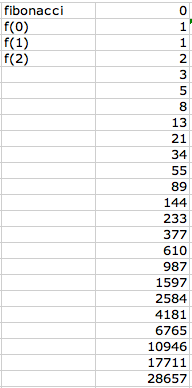 |
Limit of the ratio of successive terms
f(n+1) / f(n)
f(2) / f(1) = 1/1 = 1 f(3) / f(2) = 2/1 = 2 f(4) / f(3) = 3/2 = 1.5 f(5) / f(4) = 5/3 = 1.6666... f(6) / f(5) = 8/5 = 1.6 etc... What do you notice about the ratio of terms? As n increases the ratio approaches 1.618... this is the golden ratio. We say that the limit as n approaches infinity of f(n+1)/f(n) = the golden ratio. The last colum is of f(n+2) / f(n) The terms are approaching 2.618... that is 1 + the golden ratio. So the limit as n approaches infinity of f(n+2)/f(n) = 1 + the golden ration. |
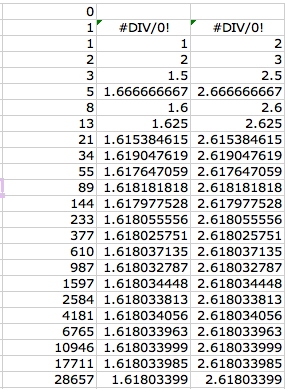 |
Arbitrary f(0) and f(1)
I created my own fibonacci sequence where f(0) = 5 and f(1) = 10. The last column again calculates f(n+1)/f(n). the values at first differ from those in the actual fibonacci sequence, but one can see that they still apprach the golden ratio as n approaches infinity. |
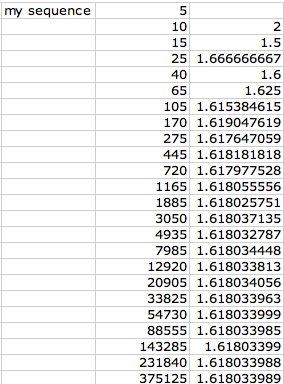 |
Lucas Numbers
In a lucas sequence f(0) = 1 and f(1) = 3 All of these sequences, despite what f(0) and f(1) equal have the same limit of the ratio of successive terms. |
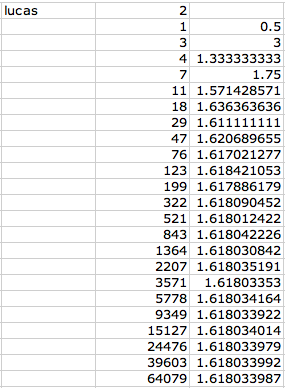 |
A positive integer n is a Fibonacci number iff
either 5n^2 + 4 or 5n^2 - 4 is a perfect square
Column 1 takes the square root of (5n^2 + 4) Column 2 takes the square root of (5n^2 - 4) When n is postive Notice what is happening. Either column one or column 2 does give an integer, but not both. And it alternates each term with which equation is satisfied. When n is even the second column is satisfied. When n is odd it is the first column. |
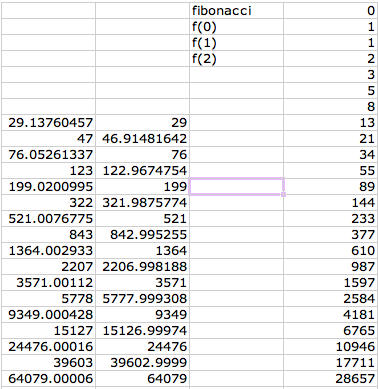 |
Fibonacci Tiling
A tiling with squares whose sides are successive Fibonacci numbers in length. |
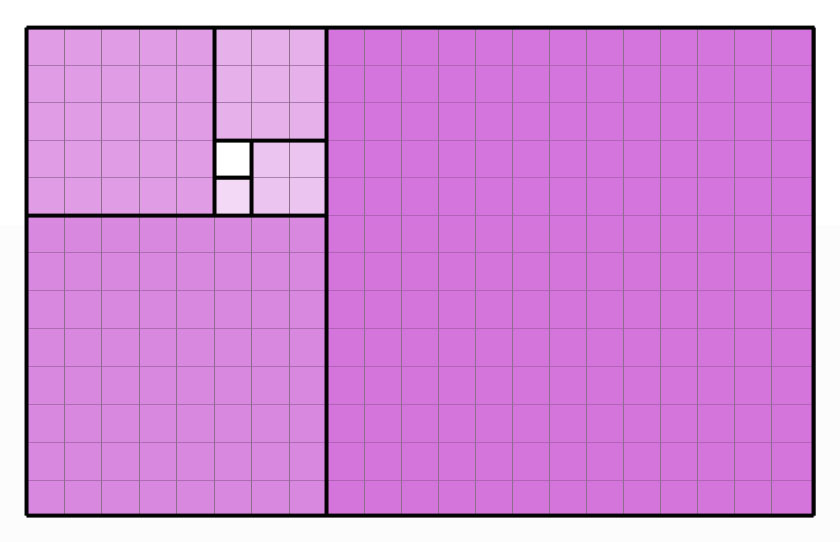 |
Golden spiral
Sprial created by drawing ares connecting the corners of squares in the Fibonacci tiling. Now can you see why the ratio of successive terms approaches the golden ratio?! |
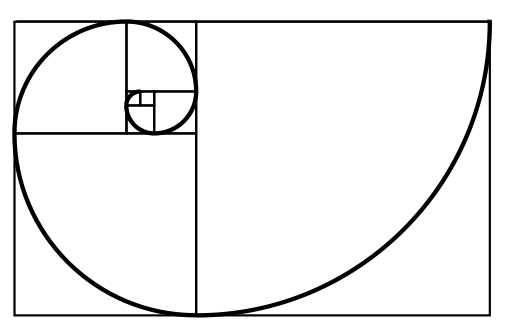 |
Pell Numbers
Pell numbers are given by
The column after the series calculates f(n)/f(n-1) Notice this value approaches 2.414... which is approximately the square root of 2. The final column calculates (f(n-1)+2f(n))/f(n). This value also appraoches the square root of 2. Why is this? There is much more that can be explored about Pell numbers. For now we can know that pell numbers are used in the rational approximation to the square root of two. |
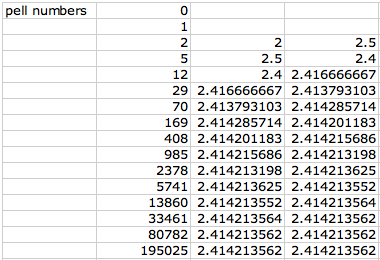 |
